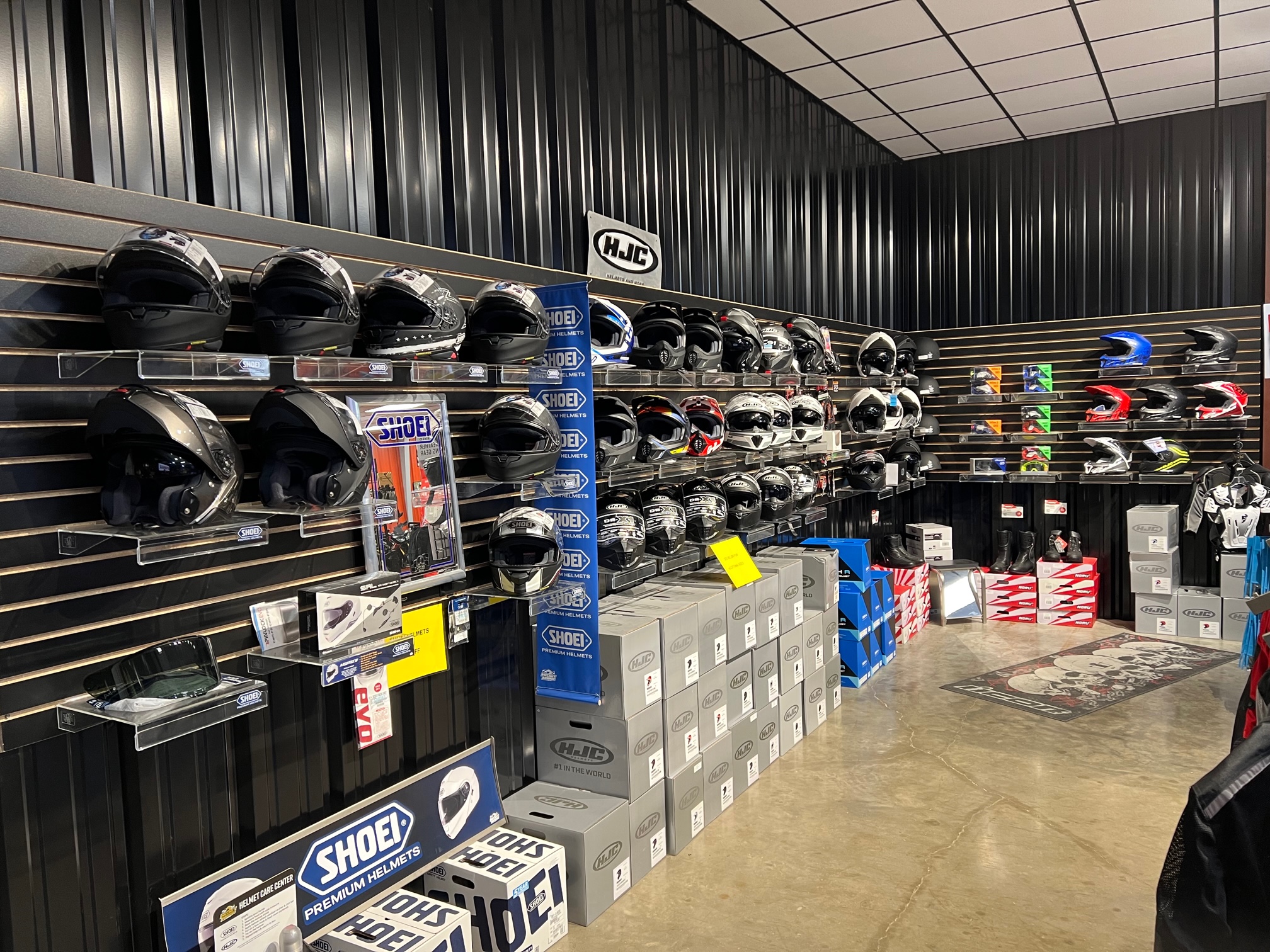Your Best Motorbike Shop for Quality Parts and Accessories
Your Best Motorbike Shop for Quality Parts and Accessories
Blog Article
Understanding the Important Parts of a Motorbike: A Comprehensive Overview for Enthusiasts
For bike fanatics looking to raise their riding experience and ensure their bikes run efficiently, recognizing the essential components of a motorcycle is paramount. Each element, from the engine's complex operations to the critical function of the braking systems, not just impacts efficiency however likewise safety and convenience.
Engine Components

The camshaft plays a critical duty in managing the timing of the engine's shutoffs, making certain the accurate opening and closing essential for reliable gas and air consumption, along with exhaust expulsion. This timing is essential to keeping optimum engine efficiency and performance. Furthermore, the carburetor or gas shot system, depending upon the motorbike model, is in charge of mixing air with fuel in the right proportion for burning.
The cooling system, either air or liquid-based, works to preserve the engine's temperature within functional limits, protecting against overheating and guaranteeing durability - motorcycle parts nz. Each part, carefully developed and incorporated, adds to the seamless procedure of the engine, defining the motorbike's power outcome and general efficiency
Transmission System
Essential to the bike's capability, the transmission system ensures effective power transfer from the engine to the wheels. This system comprises numerous vital parts, consisting of the clutch, gearbox, and final drive, each playing a crucial function in converting the engine's power right into movement. The clutch, commonly run by a hand bar, serves to disengage the engine and engage from the transmission, permitting smooth gear changes and controlled velocity.
The transmission, commonly referred to as the transmission correct, contains a set of gears that riders can by hand change through to adjust the bike's speed and torque outcome. These equipments are prepared in a sequence that enables the motorcycle to accelerate smoothly and maintain optimal engine efficiency across different rates. The majority of motorcycles make use of a sequential gearbox, calling for the rider to change equipments in a predetermined order.
Braking Mechanisms
While recognizing the transmission system is crucial to using a bike's power, equally essential is the capacity to control and stop that power efficiently, which is where stopping systems enter play. Brakes are critical for security and performance, supplying the cyclist with the needed control to browse various surfaces and conditions. Usually, motorbikes feature 2 sorts of braking systems: disc brakes and drum brakes.
Disc brakes are much more prevalent in modern-day motorbikes as a result of their premium efficiency. They consist of a brake disc, caliper, and pads. When activated, the caliper presses the brake pads versus the rotating disc, converting kinetic power into warmth, thus reducing the wheel. This system provides better warmth dissipation, consistent performance, and improved stopping power, specifically in damp problems.
Alternatively, drum brakes, though much less usual, are still discovered in some bikes. They work by pressing brake footwear versus the inner surface area of a drum affixed to the wheel. While generally less effective in warm dissipation and quiting power, drum brakes are less complex and a lot more economical.
Understanding these braking systems' nuances enables bikers to keep their bikes correctly and appreciate the engineering that makes certain efficient and secure stopping.
Suspension and Steering
Suspension and steering systems are vital parts that substantially influence a motorbike's handling and trip convenience. The shock absorber, including forks at the front and shock absorbers at the rear, soaks up roadway irregularities, boosting stability and control. Front forks, generally telescopic or inverted, compress and rebound to minimize effects, while rear shock absorbers preserve tire call with the roadway, essential for traction and safety.
Guiding, centered around the handlebars, links the rider to the bike's directional control. The guiding head bearings ensure smooth procedure, allowing precise maneuverability. Proper alignment and upkeep of these bearings are crucial for foreseeable guiding action and decreasing rider fatigue.
The suspension's adjustability is another vital element; preload, damping, and rebound settings permit personalization to suit various riding styles and problems. This site web flexibility is crucial for enhancing efficiency, whether browsing city roads or tackling tough trails. Advancements like digital shock absorber supply real-time adjustments, improving ride top quality across varied terrains.

Electric Solutions
After making sure a controlled and smooth adventure with effective suspension and steering systems, focus turns to the electric systems, an essential facet of modern-day motorcycles. These systems play a vital duty not just in starting the engine my latest blog post yet likewise in powering numerous parts that enhance the functionality and security of the bike.
At the heart of a motorbike's electric system is the battery, which stores electric power essential for starting the engine and powering complementary systems - motox parts nz. The alternator or generator, combined with the rectifier-regulator, makes sure the battery stays charged while the motorcycle is in procedure, transforming power right into electrical power and preserving voltage levels
The ignition system, an additional vital component, is accountable for sparking the air-fuel mix in the engine's cyndrical tubes. Modern motorbikes often use a digital ignition system, supplying higher effectiveness and dependability contrasted to traditional systems.
Illumination systems, consisting of headlights, tail lights, and indicators, are likewise crucial, making certain exposure and safety and security for the cyclist. Added electronic parts such as sensors, control devices, and shows contribute to innovative attributes like gas injection management, anti-lock braking systems (ABS), and electronic dashboards, further enhancing the riding experience.
Verdict
A comprehensive understanding of a motorcycle's essential elements, including the engine, transmission system, braking mechanisms, suspension, guiding, and electrical systems, is crucial for lovers aiming to maximize convenience, efficiency, and safety. Mastery bike racing helmet of these aspects enables educated decisions concerning maintenance and upgrades, eventually improving the riding experience. By integrating this understanding, bikers can ensure their motorbikes operate at peak effectiveness and dependability, therefore optimizing both pleasure and long life of their automobiles.
For bike fanatics looking to elevate their riding experience and guarantee their bikes run smoothly, recognizing the vital components of a motorcycle is paramount.Important to the motorcycle's performance, the transmission system makes sure efficient power transfer from the engine to the wheels.While understanding the transmission system is essential to utilizing a motorbike's power, just as important is the capacity to control and stop that power successfully, which is where stopping mechanisms come right into play. Commonly, motorbikes include 2 types of braking systems: disc brakes and drum brakes.
A thorough understanding of a motorbike's essential components, consisting of the engine, transmission system, stopping systems, suspension, steering, and electric systems, is indispensable for enthusiasts intending to optimize safety and security, comfort, and performance.
Report this page